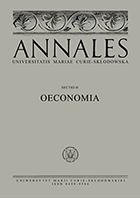
We kindly inform you that, as long as the subject affiliation of our 300.000+ articles is in progress, you might get unsufficient or no results on your third level or second level search. In this case, please broaden your search criteria.


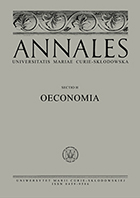






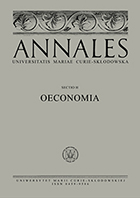
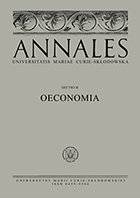
The problem of financial markets efficiency, especially the calendar effect, has always fascinated scientists. The issue is significant from the point of view of assessing the portfolio management effectiveness and behavioral finance. This paper tests the hypothesis of the unfortunate dates effect upon 22 equity indices, published by the Warsaw Stock Exchange, in relation to the following four approaches: close-close, overnight, open-open, open-close calculated for the sessions falling on the 13th and 4th day of the month, Friday the 13th and Tuesday the 13th, while the second observation group is composed of rates of return of remaining sessions. In the following part of the paper, the statistical equality of one-session average rates of return (close-close) for sessions falling on Friday 13th and sessions falling on other Fridays will be compared as well as for sessions falling on Tuesday the 13th and sessions falling on other Tuesdays.
More...
Exchange-traded products (ETP) are one of the newest financial instruments offered on the financial market. They imitate changes in the value of underlying instrument, thus, they offer investors a possibility of making a profit of the underlying instrument without having to buy it. Currently, the Warsaw Stock Exchange offers many types of ETPs. They are investment products with full or partial capital protection, products without capital protection as well as leverage products, issued on such underlying instruments as indices, prices of commodity, currency or shares. This paper presents the mechanism of functioning of moderate risk ETP available on the Warsaw Stock Exchange and the results of the analysis of statistical data on these financial instruments.
More...
The ongoing reforms of the pension systems tend to shift the consequences of the investment decisions onto the prospective retirees who usually remain unaware of the factual costs and risks associated with long-term investing. It is therefore necessary that they should be taught that saving for retirement via index funds is the most rational decision for their pension plans. The prospective retirees should be informed that deviating from investing in inexpensive index funds means de facto their (typically unconscious) consent to share a large portion of their investment gains with actively managed funds charging much higher fees.
More...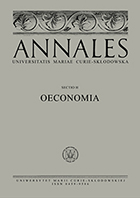
The article presents the analysis of the relations between the investor sentiment and the WIG returns on the weekly and monthly data in the period of 2011–2016. The study shows a positive, statistically significant relationship between the WIG changes and the investor sentiment index. The results obtained indicate that the WIG is the dominant variable, and the investor sentiment index depends on the WIG changes. Moreover, the Granger causality test suggests that the investor sentiment index is not the Granger cause for the WIG.
More...
The research problem was to identify the reasons for microentrepreneurs’ avoiding of gaining debt (credit, bank loans, lease, credit card). We assumed that the main reasons were cognitive. The method applied was a survey. The research findings allow one to state that half of the surveyed microentrepreneurs do not use any debt. The main reason is the reluctance to use debt. The microentrepreneurs are aware of benefits of using the debt. But they are afraid that their business financial standing is not good enough to be assessed as creditworthy. They are also afraid that changes in market and financial standing (worsening) will result in terminating debt contract. Our results support previous research that identified the discouraged borrower.
More...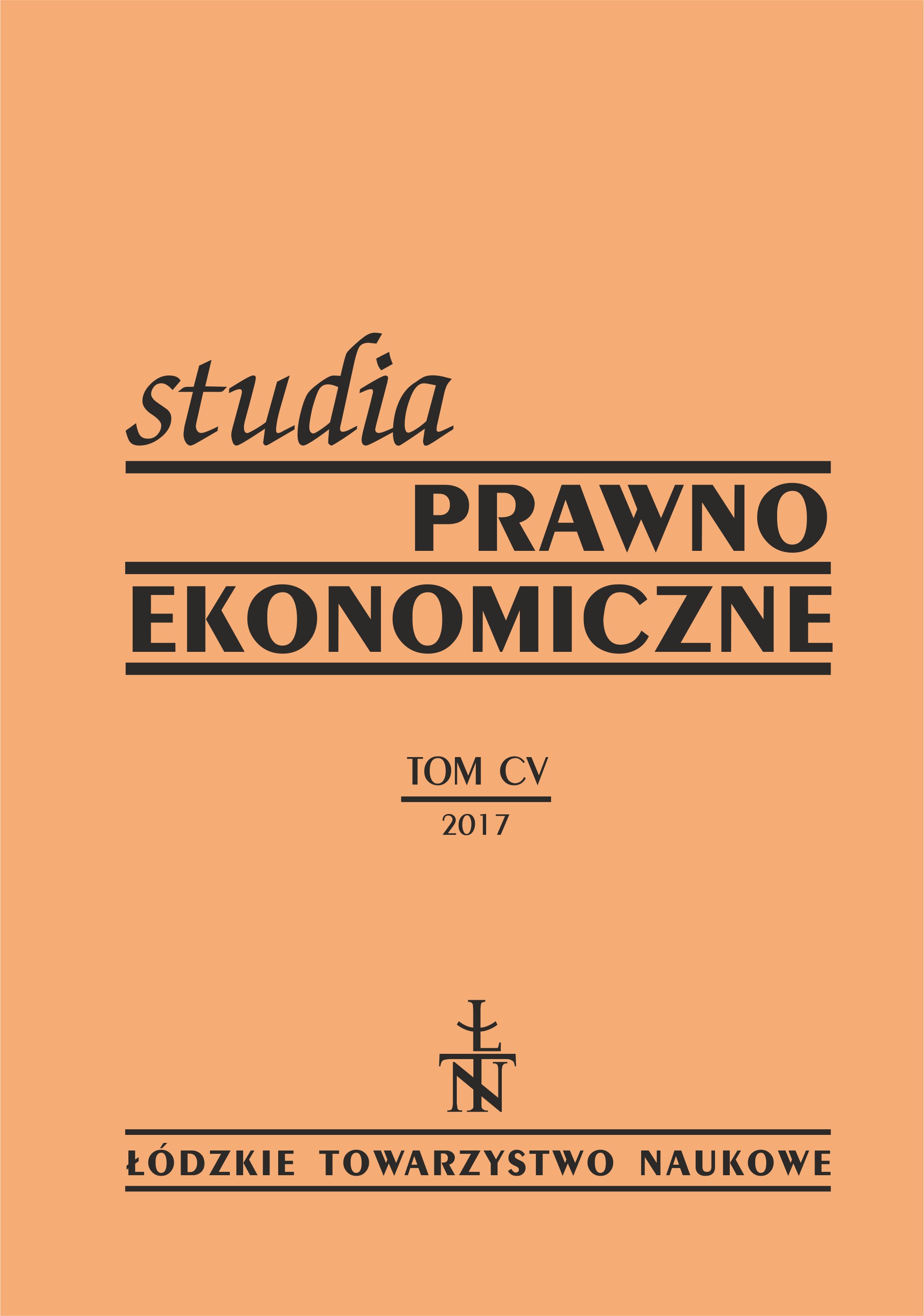
Current quantitative easing brought into monetary policy of central banks unprecedented influence on monetary equilibrium and monetary policy as a whole. The issue of money and establishing interest rates are the main activities of central banks. Through issuing of money, the central banks immediately influence the behaviour of households, companies, financial markets and the state with measurable impact on main economic outcomes. The monetary policy strategy of the EuropeanCentral Bank requires identification of a monetary aggregates which is a stable and reliable indicator of inflation over the medium term. This is closely related to growth of real GDP and the rate of unemployment. When monitoring the issue of money, it is necessary to focus not only on its volume, but also on the attributes and functions carried by money. The objective of the paper is to analyse the individual monetary aggregates of issued money in the eurozone, their different effect on economy with a major impact on medium term growth of real domestic outcome. The paper deals with the denomination of the aggregate to its various elements within European CentralBank, which is significant for fulfilling its monetary policy targets.
More...
Exit strategy is a concept of exit of the global financial crisis, developed as a result of political will of G-20 countries, expressed in the documents of FSB (Financial Stability Board). It means a return to a “normal” monetary policy, so from the period before the global financial crisis. However, central banks which have implemented unconventional monetary policy can not exit from it, in spite of numerous declarations of its normalization. Unstable macroeconomic situation of Japanese economy after the global financial crisis caused an interest in terms of exit from unconventional monetary policy of Bank of Japan. The central bank has a significance experience both in its dissemination, as well as normalization. Just before the global financial crisis, Bank of Japan started the process of normalization its unconventional monetary policy, implemented in the 90s XX century, and again has faced the need to return to it. The case study analysis of Japanese central bank has caused that the main aim of the study is identification and verification of such characteristics of exit strategy concept, which implemented should increase the effectiveness and safety of monetary policy normalization of central banks after the global financial crisis.The main objective of the study is identification and verification of characteristics of Bank of Japan exit strategy concept, aimed at increasing the efficiency and safety of the normalization process of monetary policy of central banks after the global financial crisis. The following research methods were used in the article: case study, observation analysis, cause and effect analysis, document analysis and synthesis analysis.
More...
In recent years in Poland there is a discussion taking place on the stability and effectiveness of the banking sector activity. The aim of the paper is to join the ongoing discussion and to search the answer to the question: what factors determine the changes in the financial position of the banking sector in Poland, and how? The knowledge of this issue is necessary for finding the solutions to improve stability of the banking sector and, consequently, the stability of the financial system and economic growth. The paper shows that commercial banking sector in Poland has a stable and strong capital base, above the minimal requirements, that is systematically improving. From the standpoint of capital adequacy commercial banks are prepared for worsening of the conditions of their activity. Last year, however, commercial banks operating in the Polish market achieved worse financial results than previously. Their profitability ratios decreased as well. There are threats looming on the horizon that may cause significant changes in the results of their activity. Earnings, being a fundamental source of growth of capital resources and bank’s stability, are falling due to decreasing interest and non-interest margins. Under low interest rates in the nearest future there are no perspectives for slowing down this unfavourable tendency and thus a fall in profitability of the banking sector should be expected.
More...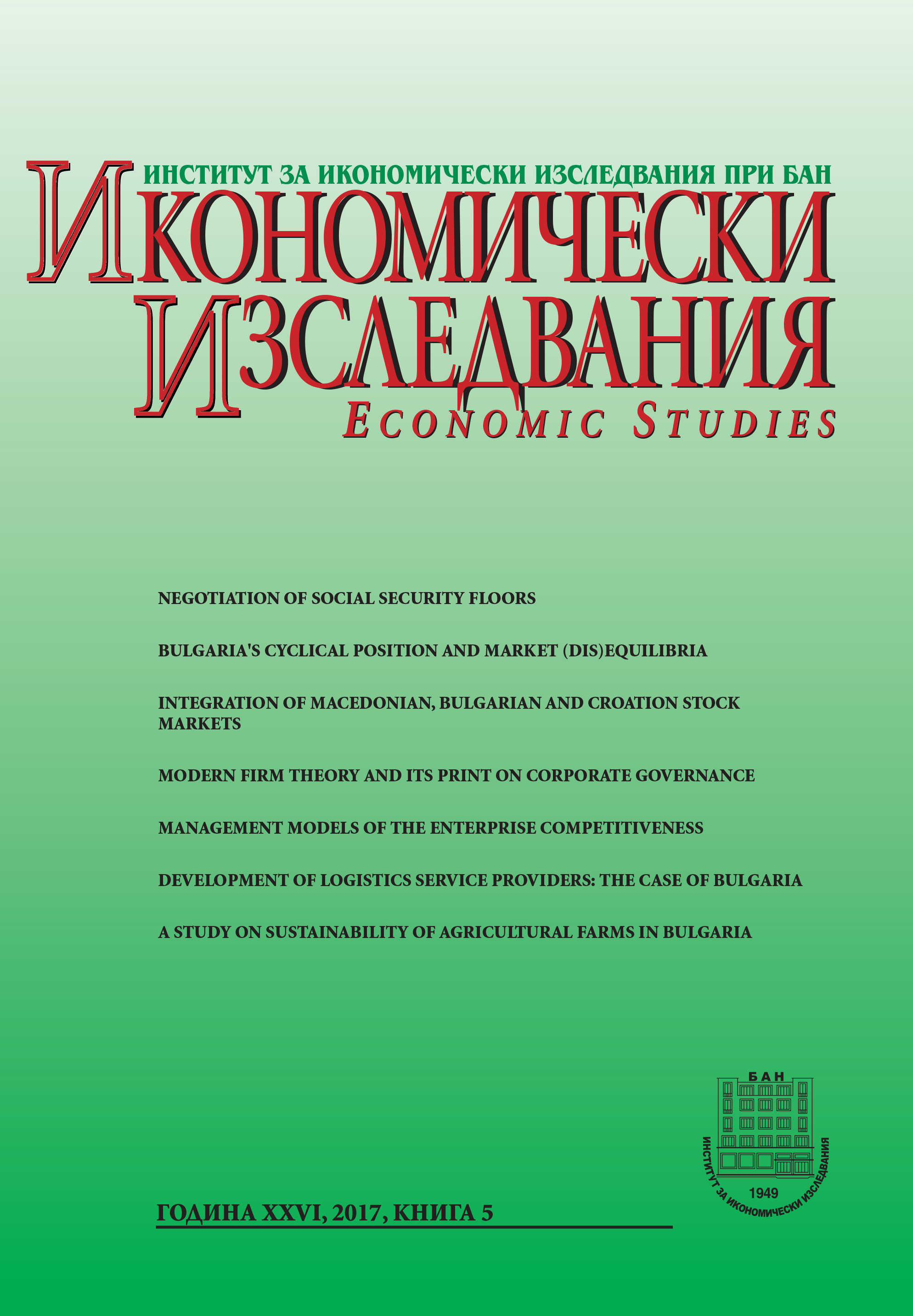
Bulgaria’s potential output and cyclical position for the period 2010-2015 are estimated by a methodology based on a two-factor Cobb-Douglas production function. An IS-LM model of the Bulgarian economy is developed to study the condition of the different types of markets (labor market, goods market and money market). During the entire period 2010-2015 Bulgaria‘s output remained below its potential, while unemployment was above its natural level. The goods market and the money market were not balanced but fluctuated around their equilibrium levels. The conclusions of the study are in agreement with the Keynesian views about the disequilibrium character of the economic system and about the necessity of an expansionistic macroeconomic policy to stabilize the economy at its potential level in case of a deflationary gap (as in Bulgaria during 2010-2015).
More...
At the end of March 2016, regional platform CEE link was established by three Balkan bourses from Macedonia, Bulgaria and Croatia. This platform provides investors from these countries possibility to buy and sell securities listed on the three bourses. The purpose of this paper is to investigate the linkages between Macedonian, Bulgarian and Croatian stock market indices. If they move together or there is common trend, then investors cannot gain portfolio diversification on this regional platform. Using Johansen Vector Error Correction Model (VECM) on data sample from January 3rd, 2005 to December 30th, 2015 the existence of long and short term relationships between the Macedonian and the Bulgarian and Croatian stock markets are detected. These findings can be limit to the benefits of equity portfolio diversification for Macedonian investors. Bilateral Co-integration test between Croatian and Bulgarian stock markets did not detect common trend that links these two stock markets. So investors from Macedonia cannot make diversification buying stocks on the Croatian and Bulgarian stock markets and vice versa, while Croatian and Bulgarian investors can diversify their portfolios by trading stocks listed on the Bulgarian and Croatian Stock Exchanges. The results are of particular interest for investors, portfolio managers and policymakers.
More...